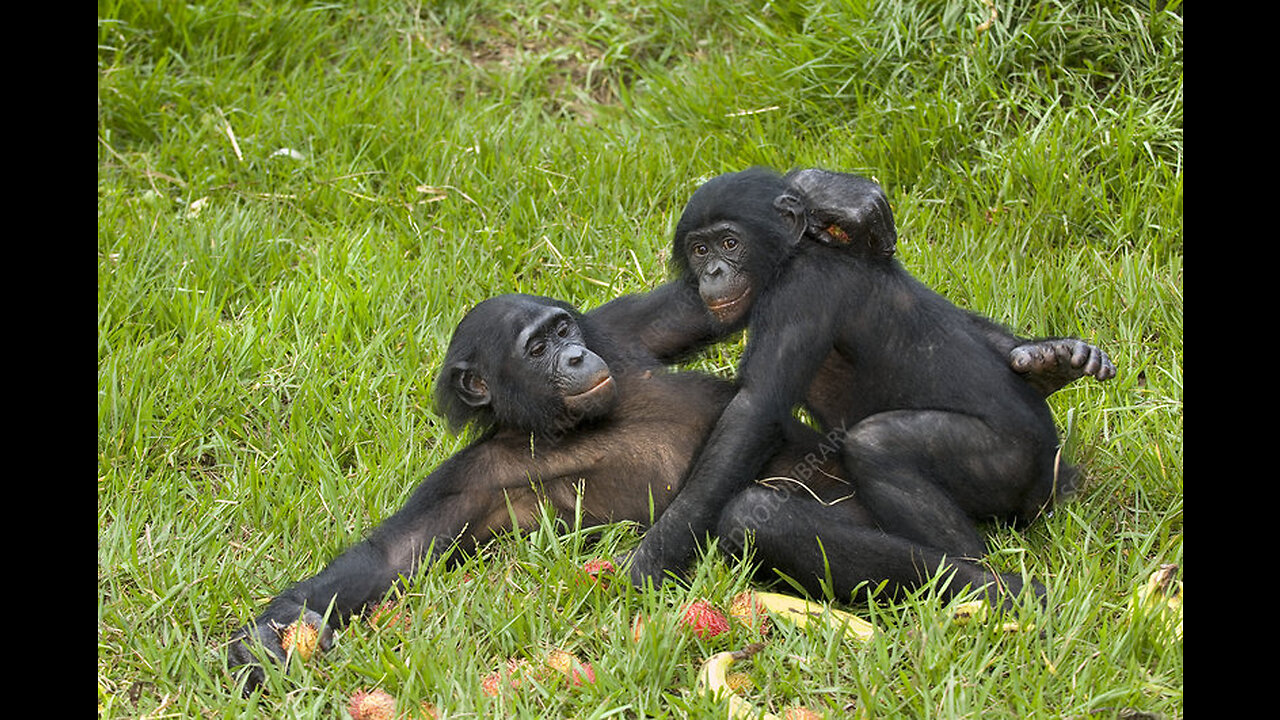Premium Only Content

CHimpanzee Mating like a Human - Surprising Behaviour
Mating behavior of adolescent male chimpanzees (Pan troglodytes) at Ngogo, Kibale National Park, Uganda. Male mating tactics vary extensively in many primates. Some variation occurs because adolescent males often are sexually active but cannot invest heavily in mating effort because of their limited ability to compete directly with adults and because they are still investing in growth; consequently, most of their mating attempts may be surreptitious and/or with females whose fecundity is low. Chimpanzees (Pan troglodytes) have a complex mating system: most copulations occur between estrous females with full sexual swelling and multiple males in group settings where the potential for sperm competition is high, but males sometimes mate-guard females, and sometimes male-female pairs mate exclusively with each other while avoiding other males during "consortships." Among other factors, dominance ranks, coalition formation, and variation in male-female association influence male mating and reproductive success. Mating effort increases from adolescence into prime adulthood. At Gombe and Mahale, adolescent males copulated more with nulliparous than with parous females, and mostly when females were unlikely to be ovulating, partly because of low adult male interest in nulliparous females and partly because of aggression from or avoidance of adult males. Adolescents thus had low probabilities of siring infants. However, adolescents are known to have gained some paternity at Gombe and in other populations, and their mating behavior deserves more study. I present data on mating by adolescent males in an unusually large chimpanzee community at Ngogo, Kibale National Park, Uganda. Adolescents at Ngogo also copulated more with nulliparous than parous females and mostly copulated outside of periovulatory periods. Also, they directed less aggression at estrous females than did adult males. However, they gained lower shares of copulations than reported for Gombe and Mahale, regardless of female parity, and received more aggression from adult males. These differences might partly reflect the influence of variation in the number of males per community on male mating tactics.
-
 4:28:45
4:28:45
Etheraeon
15 hours agoWorld of Warcraft: Classic | Fresh Level 1 Druid | 500 Follower Goal
40.3K -
 3:17:21
3:17:21
VapinGamers
7 hours ago $3.41 earned🎮🔥Scrollin’ and Trollin’: ESO Adventures Unleashed!
27.4K2 -
 LIVE
LIVE
a12cat34dog
8 hours agoGETTING AFTERMATH COMPLETED :: Call of Duty: Black Ops 6 :: ZOMBIES CAMO GRIND w/Bubba {18+}
191 watching -
 8:23:18
8:23:18
NubesALot
10 hours ago $4.81 earnedDark Souls Remastered and party games
25.2K -
 3:03:42
3:03:42
GamersErr0r
22 hours ago $2.04 earnedits not what you think
20.8K1 -
 7:15:50
7:15:50
Phyxicx
8 hours agoRocket League with Friends! - 11/22/2024
15.5K1 -
 7:54:29
7:54:29
STARM1X16
9 hours agoFriday Night Fortnite
12.9K -
 29:51
29:51
Afshin Rattansi's Going Underground
1 day agoJimmy Dore on Ukraine & WW3: Biden Wants a War that Trump CAN’T Stop, ONLY Hope is Putin’s Restraint
70.8K31 -
 3:20:54
3:20:54
Fresh and Fit
10 hours agoExposing WHO Killed JFK w/ Cory Hughes & Tommy Sotomayor
91.8K35 -
 2:41:29
2:41:29
RanchGirlPlays
10 hours ago🔴 Red Dead Redemption: Let's go help De Santa 🤠
6.81K3